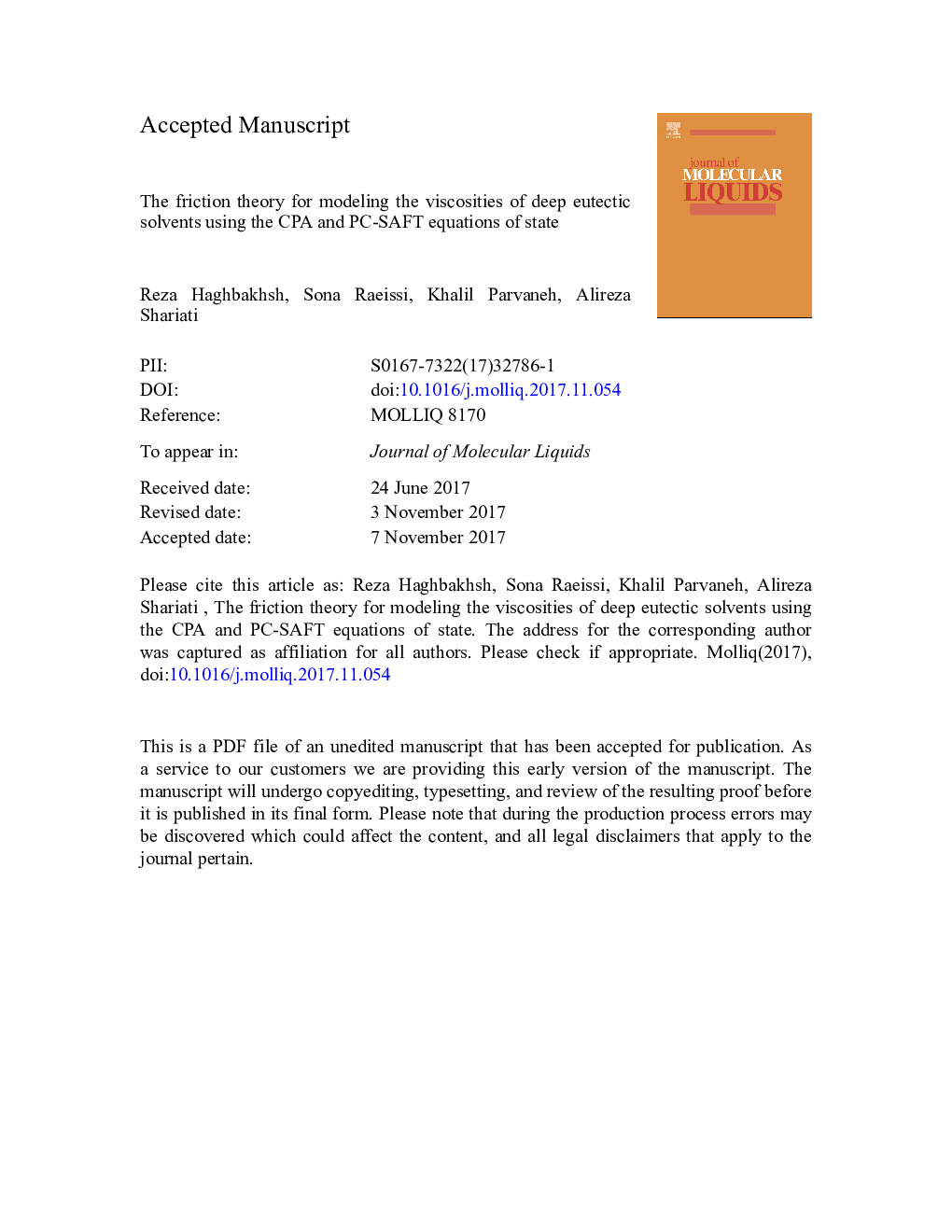| کد مقاله | کد نشریه | سال انتشار | مقاله انگلیسی | نسخه تمام متن |
|---|---|---|---|---|
| 7843685 | 1506522 | 2018 | 39 صفحه PDF | دانلود رایگان |
عنوان انگلیسی مقاله ISI
The friction theory for modeling the viscosities of deep eutectic solvents using the CPA and PC-SAFT equations of state
دانلود مقاله + سفارش ترجمه
دانلود مقاله ISI انگلیسی
رایگان برای ایرانیان
کلمات کلیدی
موضوعات مرتبط
مهندسی و علوم پایه
شیمی
شیمی تئوریک و عملی
پیش نمایش صفحه اول مقاله

چکیده انگلیسی
Deep Eutectic Solvents (DESs), as recently introduced green solvents, are interesting for different fields and applications. Most of the known DESs have high viscosities, which change dramatically with temperature. Therefore, the viscosity of a DES is most often one of the vital physical properties which must be known accurately. Because of the strong non-ideal interactions between the constituents, as well as the dramatic changes of DES viscosity with temperature, modeling and predicting the viscosities of DESs over wide ranges of temperatures is very challenging. In this study, a viscosity approach is used and implemented into two advanced association equations of state for different families of deep eutectic solvents. The cubic plus association (CPA) and the perturbed chain-statistical associating fluid theory (PC-SAFT) equations of state (EoSs), which are two powerful models to handle associating compounds, have been coupled with the friction theory, which is itself among the successful theoretical viscosity models of literature. Twenty-seven different types of DESs, for which density and viscosity data are available in open literature, were considered. A large density databank, consisting of 590 density data over wide ranges of temperatures and pressures, together with a large viscosity databank covering 253 viscosity data over wide ranges of temperatures at atmospheric pressure were collected. The resulting friction theory models with the CPA and PC-SAFT EoSs were checked against experimental data and their deviations were found to be the same and equal to 4.4%. Such accuracy showed the promising capability of both models. By changing the hydrogen bond donor types for a fixed hydrogen bond acceptor, the accuracies of the models were also shown to be good with respect to experimental values. In addition, both models perfectly followed the trends of changing ratios of hydrogen bond donors to hydrogen bond acceptors. The viscosity-temperature trend of the different DESs was also successfully modeled.
ناشر
Database: Elsevier - ScienceDirect (ساینس دایرکت)
Journal: Journal of Molecular Liquids - Volume 249, January 2018, Pages 554-561
Journal: Journal of Molecular Liquids - Volume 249, January 2018, Pages 554-561
نویسندگان
Reza Haghbakhsh, Sona Raeissi, Khalil Parvaneh, Alireza Shariati,